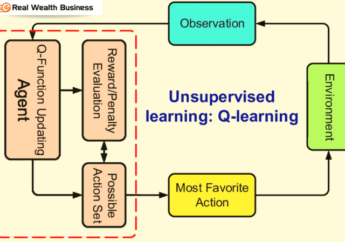Maximizing Efficiency: Guide to Migrating from MySQL to Elastic
by Abdul Aziz Mondal Technology Published on: 21 June 2023 Last Updated on: 20 May 2025

In today’s data-driven world, efficient management of databases is crucial for businesses to thrive. When it comes to handling large datasets and real-time analytics, MySQL, a popular relational database management system (RDMS), may face limitations. That’s where Elastic, a distributed, RESTful search and analytics engine, comes into play. This comprehensive guide aims to explain the process of migrating from MySQL to Elastic, highlighting the benefits and steps involved in maximizing efficiency.
Understanding Mysql And Elastic
Basics Of Mysql
MySQL is a widely-used open-source RDMS that offers robust features for managing structured data. It gives a dependable and versatile arrangement for putting away and recovering information. With support for multiple storage engines and a vast community, MySQL has become a popular choice for many applications.
MySQL offers various features that contribute to its versatility and efficiency. It supports ACID (Atomicity, Consistency, Isolation, Durability) properties, ensuring data integrity and reliability. It provides a secure and scalable environment for managing databases, allowing businesses to handle increasing data volumes effectively. MySQL also supports various data types, indexing mechanisms, and query optimization techniques, enabling efficient data retrieval and manipulation.
Introduction To Elastic
Elastic, on the other hand, is a powerful and flexible search and analytics engine. It exceeds expectations in dealing with enormous information, permitting businesses to pick up real-time bits of knowledge from organized and unstructured information. Elastic’s distributed nature enables horizontal scalability, making it an ideal choice for organizations dealing with large datasets.
Elastic provides a comprehensive set of tools and capabilities for data management and analysis. It offers an adaptable and fault-tolerant design that can adjust to advancing information needs. Elastic’s indexing and querying features are designed for fast and efficient search operations, enabling businesses to retrieve relevant information swiftly. Additionally, Elastic’s analytical capabilities, including aggregations and machine learning algorithms, empower organizations to derive valuable insights from their data.
Why Migrate From Mysql To Elastic?
Limitations Of Mysql
As datasets grow in size and complexity, MySQL may face scalability issues. It battles to handle expansive volumes of information effectively, coming about in execution bottlenecks. Moreover, MySQL is not optimized for unstructured data and real-time analytics, limiting its usability in certain use cases.
MySQL’s reliance on a centralized architecture can pose challenges in scaling horizontally to accommodate increasing data volumes. As data grows, organizations may encounter issues related to storage capacity, data processing speed, and response times. MySQL’s traditional relational model is more suitable for structured data, making it less efficient for handling unstructured or semi-structured data types commonly found in modern applications.
Advantages Of Migrating To Elastic
Migrating from MySQL to Elastic offers several advantages. Elastic can effortlessly handle big data, enabling businesses to process and analyze massive datasets in real-time. Its flexibility in handling structured and unstructured data makes it a versatile choice for various applications. By migrating, organizations can unlock new possibilities for data-driven decision-making.
Elastic’s distributed architecture allows for horizontal scalability, meaning organizations can easily add more nodes to the cluster to accommodate growing data needs. It fights to handle sweeping volumes of data viably, coming almost in execution bottlenecks. Elastic’s real-time capabilities enable organizations to gain insights from data as it arrives, facilitating faster decision-making and enabling timely responses to changing business conditions.
Another significant advantage of Elastic is its support for unstructured data. Elastic’s schema-less approach allows businesses to ingest and analyze data in its raw form, without the need for predefined structures. This adaptability empowers organizations to use different information sources, such as log records, social media nourishes, and sensor information, to pick up an all-encompassing see of their operations and client behavior.
Planning The Migration
Evaluating The Current Mysql Setup
Before embarking on the migration journey, it is essential to evaluate the existing MySQL setup. Consider the estimate and complexity of the database, distinguishing any potential execution bottlenecks or issues. This evaluation will help in understanding the scope of the migration and planning accordingly.
Assessing the current MySQL environment involves examining factors such as data volume, the number of concurrent users, and the complexity of queries. It is essential to identify any limitations or pain points experienced with the current setup. This assessment will give important bits of knowledge into the particular prerequisites and challenges that have to be tended to amid the relocation handle.
Steps Involved In The Migration Process
Migrating from MySQL to Elastic involves a systematic approach. The process begins with data preparation and mapping from MySQL to Elastic. It is crucial to ensure that the data is appropriately transformed and mapped to align with Elastic’s schema. Additionally, data backup and testing should be conducted to mitigate any risks during the migration.
The migration process typically involves the following steps:
- Data Analysis: Analyze the existing MySQL database structure, identifying tables, relationships, and dependencies.
- Schema Design: Define the schema for the Elastic index, mapping MySQL tables to Elastic’s document structure
- Data Extraction: Extract data from MySQL tables, transforming it into a format compatible with Elastic.
- Data Loading: Load the transformed data into Elastic, ensuring the correct mapping of fields and data types.
- Data Verification: Validate the migrated data in Elastic, comparing it against the original MySQL dataset to ensure accuracy.
- Functional Testing: Perform comprehensive testing to verify that the application functions correctly with the migrated data.
- Performance Testing: Evaluate the performance of the migrated system, identifying any potential bottlenecks or areas for optimization.
Executing The Migration
To execute the relocation effectively, a step-by-step preparation ought to be taken after. Exporting data from MySQL and importing it into Elastic is the first crucial step. During this process, data transformation and mapping might be required to ensure a seamless transition. It is essential to pay attention to details and validate the migrated data to maintain data integrity.
Tips and Best Practices for a Successful Migration:
- Perform thorough testing before migrating critical data.
- Ensure proper communication and coordination between the teams involved.
- Monitor the migration process closely, keeping an eye on performance and any potential issues.
- Implement a rollback plan in case of unforeseen challenges.
Post-Migration Optimization
Once the migration is complete, optimizing the Elastic setup is crucial for maximizing efficiency. This includes index optimization to enhance search performance and shard allocation for balanced data distribution. Query optimization techniques should be applied to improve response times and overall system performance. Ongoing maintenance and monitoring are vital to keeping the Elastic cluster healthy, including regular backups and recovery strategies.
Optimizing the Elastic environment involves:
- Index Optimization: Fine-tuning the index settings to improve search performance and relevance. This may involve configuring analyzers, tokenizers, and filters to optimize text-based search operations.
- Shard Allocation: Distribute the data across multiple shards to achieve parallel processing and load balancing. Proper shard allocation helps optimize search and aggregation operations.
- Query Optimization: Analyzing query performance and identifying opportunities for optimization. Techniques like query rewriting, caching, and using appropriate search APIs can significantly enhance query response times.
- Monitoring and Maintenance: Implementing monitoring tools and practices to keep track of cluster health, resource utilization, and performance metrics. Regular maintenance tasks, such as index optimization, hardware upgrades, and software patches, should be performed to ensure optimal system functioning.
Conclusion
Migrating from MySQL to Elastic is a significant step towards maximizing efficiency in managing databases. By understanding the limitations of MySQL and embracing the benefits of Elastic, organizations can unlock new possibilities for data management and real-time analytics. With careful planning, execution, and post-migration optimization, businesses can harness the full potential of Elastic, enabling them to make data-driven decisions with confidence.
In conclusion, this comprehensive guide has provided valuable insights into the process of migrating from MySQL to Elastic. Embrace this opportunity to streamline your database management and unlock new levels of efficiency with Elastic.
Read Also:



































































































